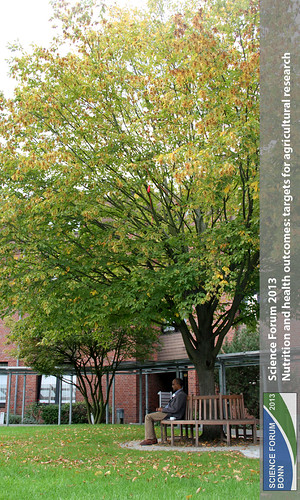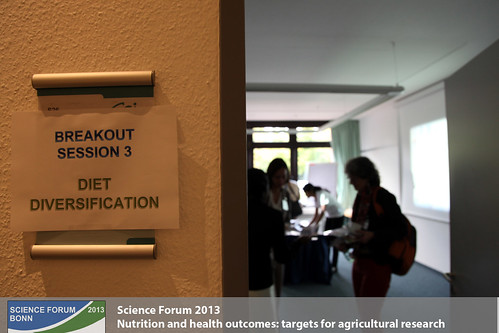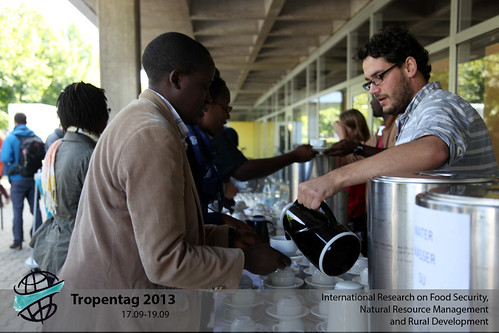Paulina Campos's blog
Trees, diets and urban planners?
Wed, 09/25/2013 - 15:42 — Paulina Campos We might often think of trees from an ecological point of view, delivering ecosystem services such as carbon sequestration or preventing soil erosion. But what about their dietary value? How can they contribute to improve food security and nutrition? Do children in areas with more trees have more diverse diets? Amy Ickowitz from the Center for International Forestry Research (CIFR) addressed these questions during her presentation “Role for forests for nutrition” during the session “Diet diversification”.
We might often think of trees from an ecological point of view, delivering ecosystem services such as carbon sequestration or preventing soil erosion. But what about their dietary value? How can they contribute to improve food security and nutrition? Do children in areas with more trees have more diverse diets? Amy Ickowitz from the Center for International Forestry Research (CIFR) addressed these questions during her presentation “Role for forests for nutrition” during the session “Diet diversification”.
How much biodiversity is on your plate?
Wed, 09/25/2013 - 13:23 — Paulina Campos If the french writer and famous foodie Brillat-Savarin (1755-1826) would have been sitting among us at the breakout session about “Role of indigenous (forgotten) foods (plants and animals) in food diversification: what don’t we know?” he would be very dissapointed to see what we human kind has become. “Tell me what you eat and I’ll tell you who you are” wrote once Mr. Savarin. If we consider that from the 7.000 plant species and several thousand animal species used for human nutrition over the past 12.000 years, 98% of our modern diets relies only on 12 plant crops and 14 animal species, what would we answer if he asked us: who are you then now? A result of increasingly simplified diets which is the mirror of increasingly simplified agroecosystems.
If the french writer and famous foodie Brillat-Savarin (1755-1826) would have been sitting among us at the breakout session about “Role of indigenous (forgotten) foods (plants and animals) in food diversification: what don’t we know?” he would be very dissapointed to see what we human kind has become. “Tell me what you eat and I’ll tell you who you are” wrote once Mr. Savarin. If we consider that from the 7.000 plant species and several thousand animal species used for human nutrition over the past 12.000 years, 98% of our modern diets relies only on 12 plant crops and 14 animal species, what would we answer if he asked us: who are you then now? A result of increasingly simplified diets which is the mirror of increasingly simplified agroecosystems.
Could you live without coffee?
Sat, 09/21/2013 - 14:34 — Paulina Campos I personally would have a very hard time but still would be able to survive. But many smallholder coffee producers in San Juan del Río Coco in Northern Nicaragua would be left without their main and only source of income if they were not able to grow coffee anymore. Even if this scenario might turn into a reality in a year as far as 2050 the possibility is real and the chances quite big.
I personally would have a very hard time but still would be able to survive. But many smallholder coffee producers in San Juan del Río Coco in Northern Nicaragua would be left without their main and only source of income if they were not able to grow coffee anymore. Even if this scenario might turn into a reality in a year as far as 2050 the possibility is real and the chances quite big.
Interview with Keynote Speaker, Mr. Rene van Veenhuizen, RUAF Foundation
Thu, 09/19/2013 - 16:40 — Paulina CamposEva Hilt, Editor & Blogger
Mon, 09/16/2013 - 11:14 — Paulina Campos Eva studies “Sustainable International Agriculture” at the University of Göttingen. She is about to start her master thesis in the Nakuru district in West Kenya regarding “Post harvest milk losses”.
Eva studies “Sustainable International Agriculture” at the University of Göttingen. She is about to start her master thesis in the Nakuru district in West Kenya regarding “Post harvest milk losses”.




